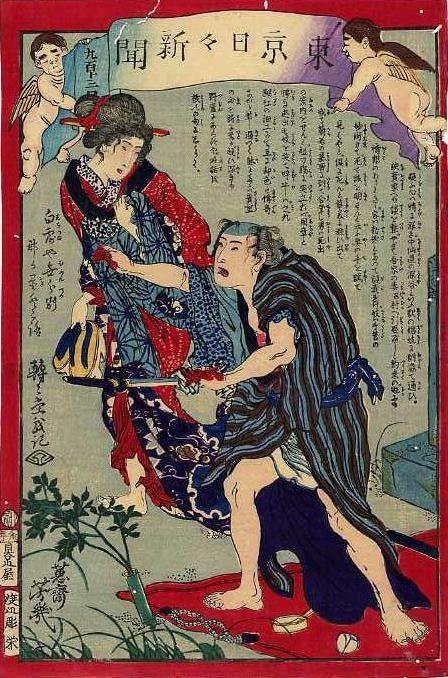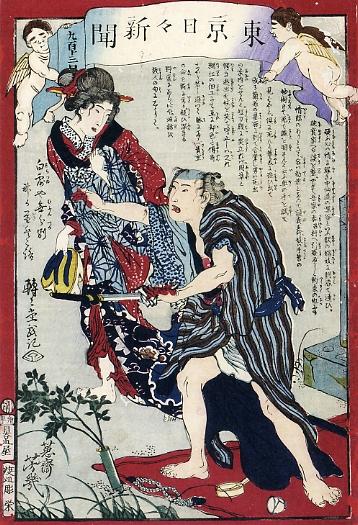Commentary
Tentenō, the gesaku (戯作) writer Takabatake Ransen, adds 戯記 (geki) or "frivolous writing" rather than the usual 記 (ki) or 誌 (shi) after his name. He also signs TNS-781, TNS-1036b, and TNS-1046 this way -- reminiscent of 戯筆 (girefude) or "frivolous brushing" in Yoshiiku's signature on the frontispiece of Kanagaki Robun's Aguranabe.
temple is written 蘭若 (ran'nya) but glossed てら (tera). Ran'nya is short for "aran'nya" (阿蘭若), a Chinese transliteration of Sanskrit "aranya" -- a quiet place suitable for ascetic practices, a forest sanctuary, a place without war or violence. Aranya is a now a trendy new-age word for a spot away from it all -- which could be only as far as your garden or study.
farce is written 伝記 (denki) but glossed きょうげん (kyōgen), which is usually written 狂言 or "mad words". Denki means "romance" but kyogen means "farce" when talking about a drama or play. As a behavior, though, kyogen means a fake act, a put-on, a sham. "Kyōgen jisatsu" (狂言自殺) means a staged attempt to kill oneself, as when making an empty threat to get one's way.
red paste is written 糊紅 and glossed のりべに (noribeni) -- which today is usually written 血紅 -- a fake blood made with coloring and paste, used in kabuki to lend realism to cutting, such as in seppuku scenes. For more about the sense of "beni" (紅) as a pigment material, see the commentary to TNS-1054 Confessions of evil.

